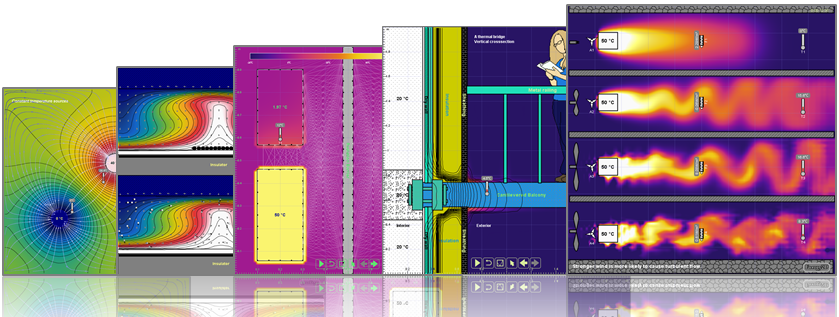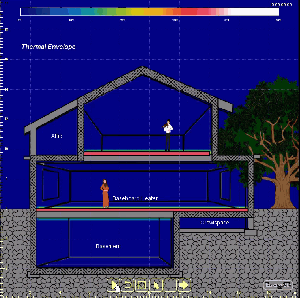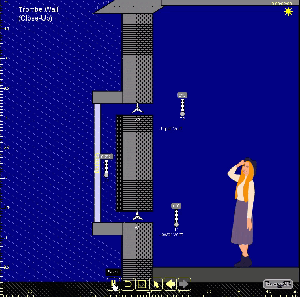|
Based on computational physics, Energy2D is an interactive multiphysics simulation program that models all three modes of
heat transfer — conduction, convection, and radiation, and their coupling with particle dynamics.
Energy2D runs quickly on most computers and eliminates the need to switch among preprocessors, solvers, and postprocessors in order to perform typical
computational fluid dynamics simulations.
It allows you to design "computational experiments" to test a scientific hypothesis or solve an engineering problem without resorting to complex mathematics.

Multiphysics simulations at your fingertips
What are people around the world saying about Energy2D?
 |
“I am working as consulting engineer and we often have to make quick estimations where a steady-state node model is too simplified and setting up a complex FEM model is overkill.
Energy2D is a very handy tool for something [like] that and I like the click'n'play sandbox feeling in combination with the physical correctness. I never thought FEM could be that fun.”
|
 |
“A big THANK YOU for this wonderful and free software. I actually try different wall simulations (conduction, energy loss) and i am very happy with your software.
I also use Comsol Multiphysics but this software needs much more time for proper solutions than your software. I really appreciate your good work.”
|
 |
“Energy2D is a wonderful FREE application that carries out complex two-dimensional calculations based on real physics.
I have found it difficult to get exact numerical matches between simulations and real world situations,
but the physics which the software simulates is deeply insightful. I strongly recommend that you waste several hours playing with its example demonstrations.”
|
 |
“Very impressed of your software. We are a company located in Costa Rica, in the field of condition monitoring training and reliability.
In our main training courses is Infrared Thermography. You software seems very usefull for demonstrations of basic physics concepts of heat and temperature.”
|
 |
“It is indeed [an] excellent tool for simplified 2D problem. Your tool can find vast marketing opportunity in industrial applications very quickly.
In many cases, engineers are only interested in visualizing simple 2D cases like what you present in your tool and they are reluctant to spend thousands of dollars for expensive CFD simulations.”
|
 |
“All the participants have made very positive comments on the simulation and explored it with great interest,
even when their subject matter in school was not science but they teach for example anatomy or business economics!
This is again a proof of the very good job you've done, especially for what concern the use of colours and animation.”
|
 |
“This is the best computer based tool I have found so far! I'm using Matlab and Mathematica a lot, but for the students (and for me too!) this is a simple,
intuitive and fast way to check out ideas and learn from intuition and not only from equations. Again, thanks a lot for sharing this, it is amazing! It will help my students and myself a lot.”
|
 |
“I want to thank you to make this fabulous simulation tool of physical phenomena available to the community.
We will use this tool to introduce our students in the course of transport phenomena in understanding the transfer of momentum and energy as heat.”
|
 |
“My teacher showed me this software. It's really powerful and incredibly simple to use.
Sometimes this kind of simulation software is complicated to use. However, this is not an issue with Energy2D.”
|
 |
“If someone needs a 2D calculation and doesn't want to deal with the details, and is willing to swallow some computational inaccuracy, I highly recommend Energy2D.
If everyone already knows, then I'm sorry for the time-wasting, it was new to me, and it's incredibly easy to handle compared to the 3D programs so far.”
|
As of July 2023, Energy2D has been used as a simulation tool by scientists and engineers in
more than 90 papers.
Work is also underway to incorporate other types of energy transformations (e.g., phase changes and chemical reactions through
the Stefan condition
and support multiple types of fluids (e.g., air and water).
How to cite it?
Charles Xie,
Interactive Heat Transfer Simulations for Everyone, The Physics Teacher, Volume 50, Issue 4, pp. 237-240, 2012.
|
|















